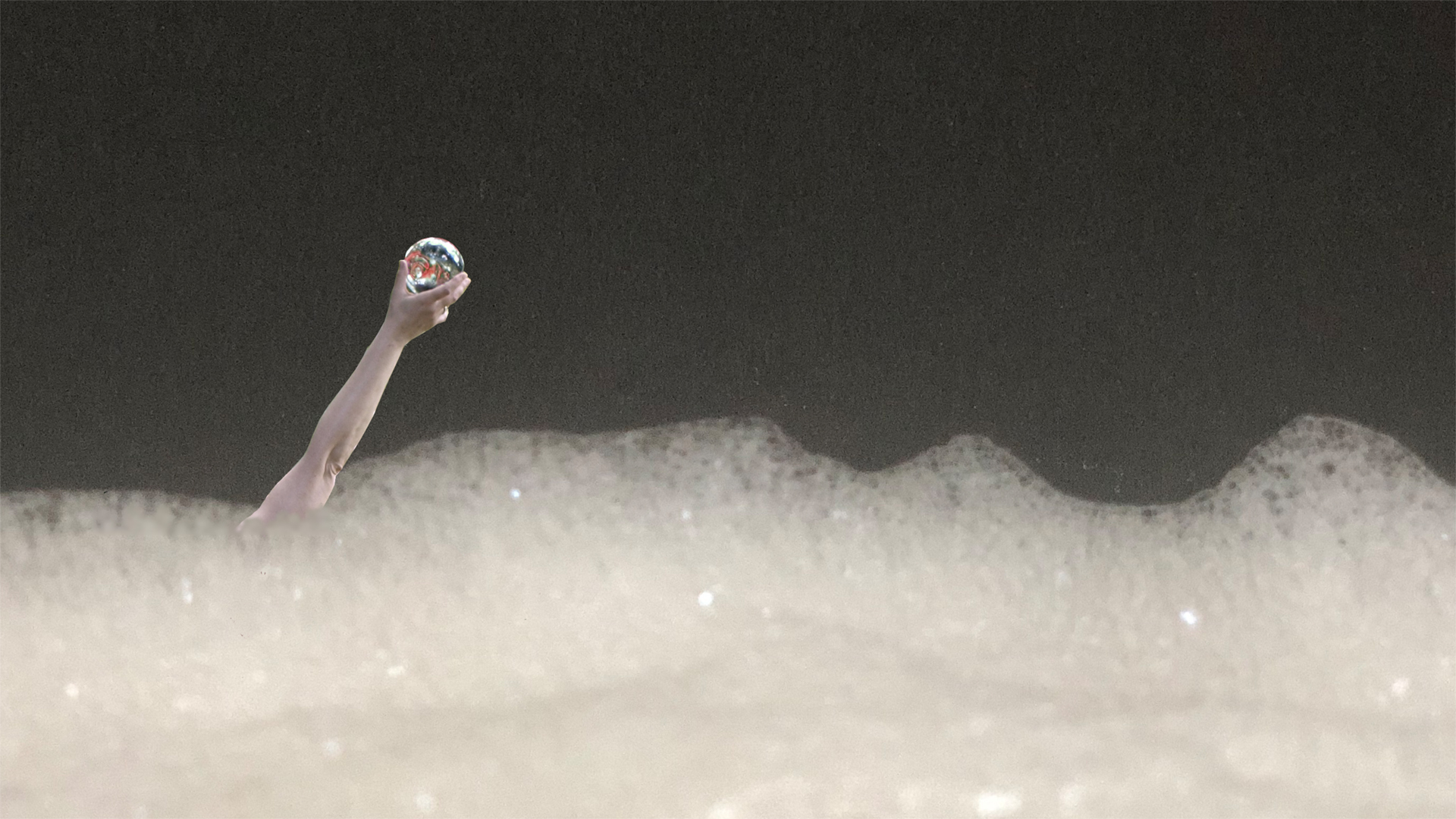
The Momentum of Gesture in Art and Religion (5)
What can art achieve in times when the spirit (Geist) is made to foam? When foam becomes reality – doesn’t art then have to become invisible? Do its gestures then become aesthetic frothing – for instance, because dancing in the foam only stirs it up even more? Or can those who make art grab themselves by the scruff of the neck and pull themselves out of the foam in a kind of Munchauseniad?
If reality foams – is it then a sober dream that art could dissolve the foam with a deft gesture? It sounds as if it only needs to wave a wand in a special way. But it doesn’t seem to be that simple. In fact, everyone who knows Harry Potter knows how foam production works. Has anyone actually not read Order of the Phoenix, or at least not seen it? Probably more people in Europe today know the stories of J. K. Rowling than those of the Bible. And yet very few seem to understand how power is transferred and maintained. That is probably why no one asks what the hand gesture could look like that could put an end to the unbearable foam production of the conspirators of You-know-who. What skilful gesture, then, could demystify the efficacy of foam in such a way that it becomes visible for what it is: the manifestation of a foaming spirit?
Throughout the ages, the transformation of spirit into foam has served to dominate, control and instrumentalise it. Mechanical processes and recurring routines characterise rituals of power and domination. They aim at the exclusion of the foreign or its eradication through forced adaptation. Above all, however, they serve to suppress play and novelty that cannot be instrumentalised. If the spirit that is made docile and sends itself in could express this gesturally, it would be a gesture of humble submission.
In a reality that is intoxicated with foamed exuberance, art soberly holds on to the possibility of dreaming up real embodiments. By giving shelter to the spirit. It offers it interstices and thresholds, gaps and cracks, folds and niches, joints and fractures, points and holes. That is why the spirit sometimes appears in the form of emptiness in art. For example, when it retreats between the lines of a poem in retreat from the foam of pronouncements that penetrates every crack. Sometimes this happens on the verge of silence, as in Eugen Gomringer’s “Schweigen” (Silence), in the hope that this will also silence the chatter.
Sometimes art even succeeds in putting into words the moment when the spirit sinks below the threshold of its perceptibility, as in Goethes poem:
Above all peaks
Is silence.
In all the treetops
You feel
Barely a breath;
Just wait! Soon
You too will rest.
If foam is a spirit trapped in bubbles of faith, then it has one purpose above all: that everything runs cleanly and purely for those in power, and above all as if it were lubricated. This is the only way to explain the unbelievable: Why, by invoking truths of faith, under holy insignia such as the cross and the crown, in the name of religion and science, spread by preachers and journalists, the froth of that pious way of thinking can spread, enabling the preparation of pogroms and wars against those of different faith and against unbelievers. For at all times the majority of those who acted were convinced that they were acting in the spirit of the right faith and truth: when they crucified Christians and burned heretics, when they tortured unbelievers on crusades, when they threw witches bound in water, when they gassed Jews. Always part of the frothing was the belief that the victims themselves were to blame for their persecution. Couldn’t they simply have betrayed their faith, recanted their views? Abjure heretical thoughts, voluntarily allow themselves to be compulsorily baptised – it would have been so easy to enjoy the bath in the foam of the cheap way of thinking.
And the artists in the meantime? How can artistic work be done with foam and in it? Without a doubt, there are attempts here. They range from Allan Kaprow’s happenings of the 1960s to Christine Biehler’s Venus World at the end of the 1990s to the high art of milk foam design of the present. But it seems obvious that gestural activities achieve little in a ubiquitous milieu of foam. Does foam necessarily reduce gestus and gestures to wild waving that also disperses the flakes into the air? The only appropriate gesture under the conditions of universal foam production would perhaps be the hand that reaches out from it in search. But who is in possession of a defoamer that disenchants the delusion?
Some think that all one has to do is be patient. Foam will dissolve on its own. But is that a realistic hope? Because in a time when more information is traded in milliseconds than in days with money, the hour of the foam has come. That is why the pressure is increasing. Because, according to the creed of growth, there must always be more foam than foam. The gesture of the zeitgeist of the information society is no longer the rubbing together of thumb and forefinger but the wiping of the eyes.
Robert Krokowski